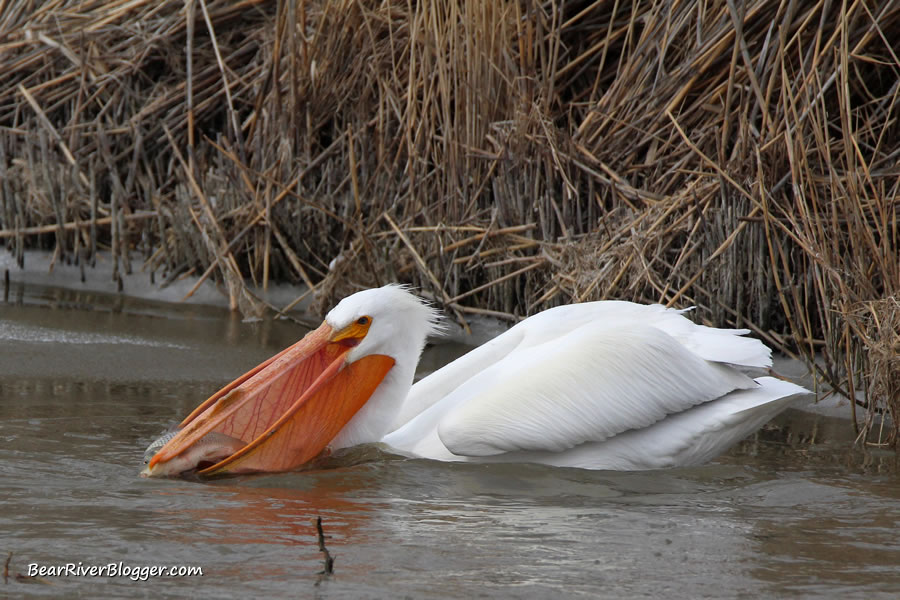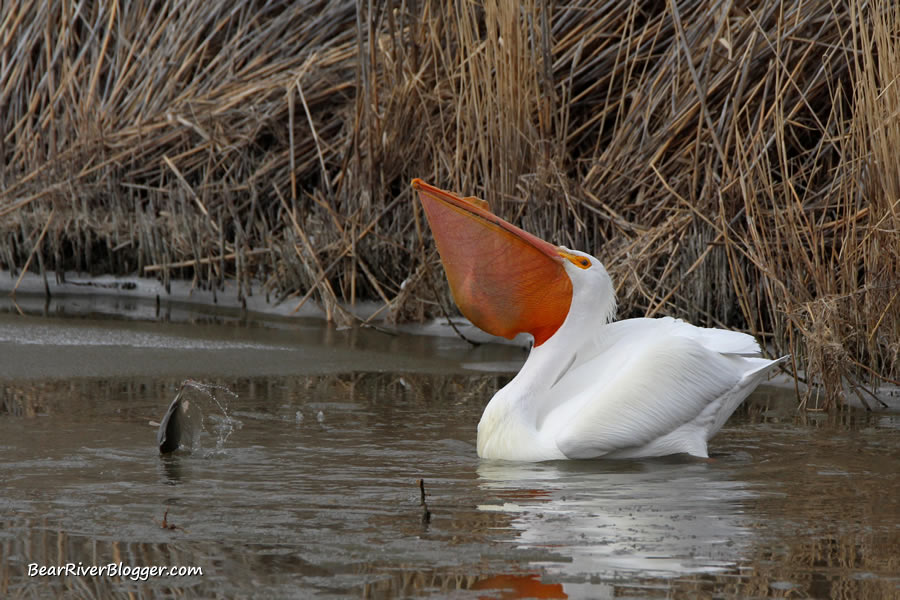Have you ever sat and wondered why certain birds have such unique and sometimes odd physical characteristics as they do?
Well, I don’t know about anybody else but I certainly do.
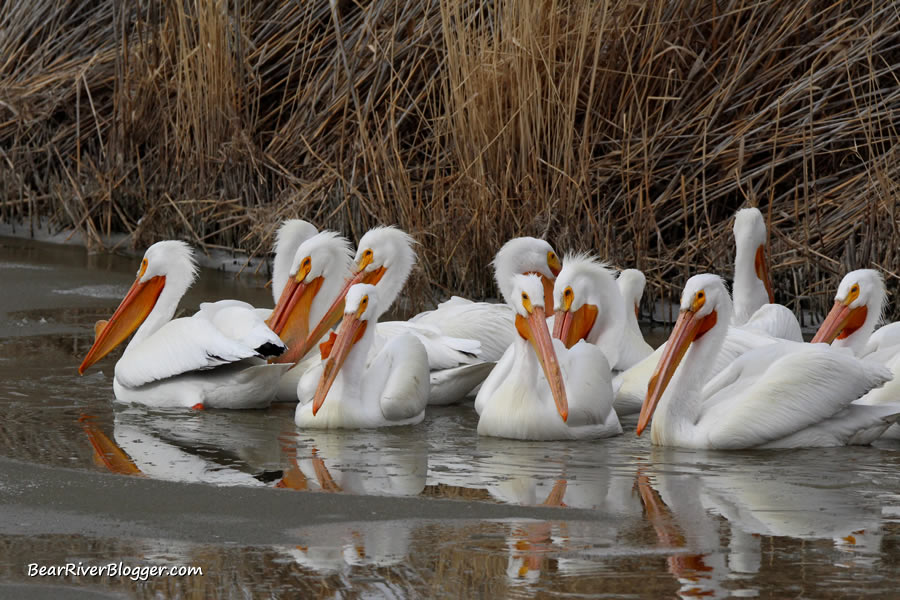
And this built-in curiosity factor is one of the reasons why I love birdwatching so much, there is always something to learn when it comes to our avian friends.
Follow my blog for any length of time and you will quickly realize the American white pelican is one of my personal favorite birds to watch and photograph.
Pelicans are not only beautiful but they are quite distinctive from other birds with some of their peculiar physical features as well, particularly their attention-getting large throat pouch.
Described as a very large waterbird with predominantly white plumage, long but slender orange beak, a large throat pouch, and bright orange feet, the American white pelican is said to be as graceful in the air as it is clumsy on land.
But there is one very distinct physical characteristic of the American white pelican that sets it apart from other bird species many people have a misunderstanding about, namely what purpose is their large throat pouch for.
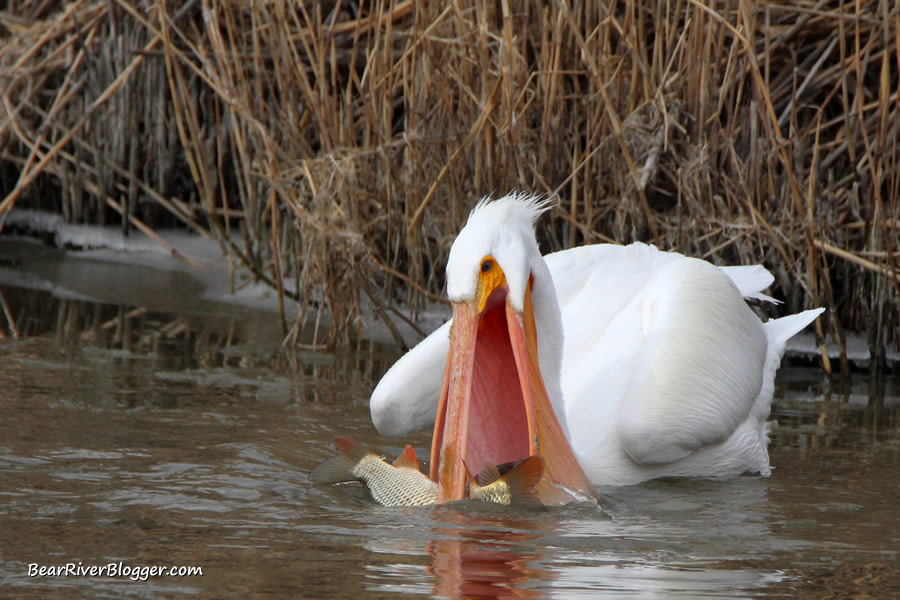
Attached to the lower beak and throat of the American white pelican is a large, orange-colored pouch called a gular.
Contrary to a common misconception, pelicans don’t store or carry food in their throat pouch but use these large pouches only to catch fish, similar to a big fishing net of sorts.
Even breeding pelicans that have growing chicks to feed don’t carry fish back in their pouch but, once back at the nest, end up regurgitating the swallowed fish directly into the young chick’s beak.
American white pelicans catch fish with their throat pouches by repeatedly dunking their heads and open beaks underwater, scooping up, and immediately swallowing any unsuspecting fish whole afterward.
Pelicans here in northern Utah feed on a lot of carp and because of their large throat pouches, pelicans can catch and swallow some very sizeable fish, sometimes catching two and even three carp in their pouch at one time.
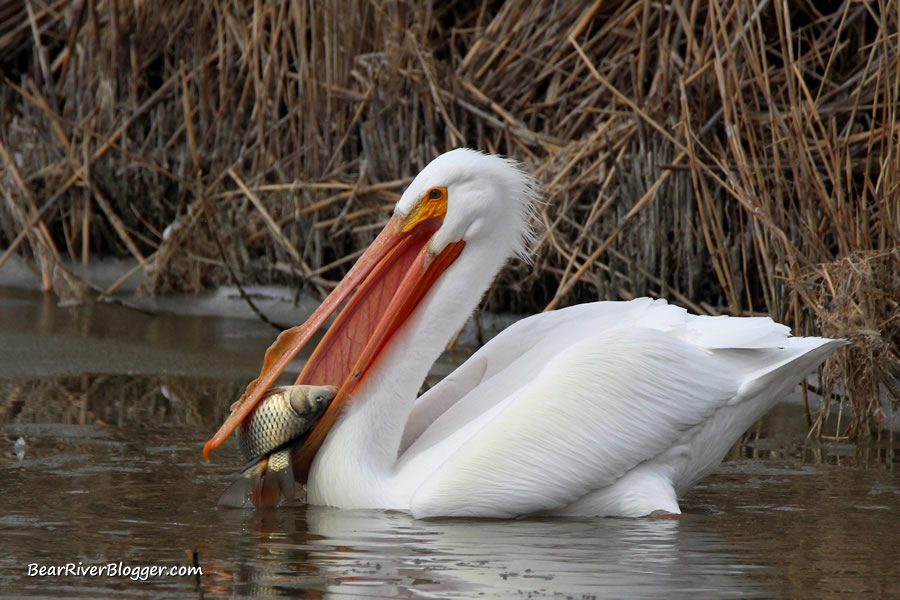
In fact, during late winter last year, a few American white pelicans migrated in early, showing up at Farmington Bay in mid-February and eagerly looking for food amongst the small open patches of the still mostly frozen marsh.
I sat and watched one particular pelican quickly and effortlessly scoop up three large carp in its pouch somehow, eventually dropping two of them onto the ice before the remaining carp was swallowed.
It’s quite common for pelicans to feed in large groups, commonly referred to as pods, with other pelicans in a choreographed effort to chase and corner their prey in shallow waters where feeding success is much higher.
(American White Pelican Feeding Frenzy. For short nature clips like this one and interesting stories about the natural world around us, check out our Bear River Blogger channel on YouTube for videos and updates from our travels while out in nature, both on and off of the famed Bear River Migratory Bird Refuge.)
And take it from an avid birder who spends a lot of time photographing pelicans on the Bear River Migratory Bird Refuge auto tour route each summer, watching pelicans feed in such large flocks is quite an interesting sight to behold, especially with the very large pods of pelicans that can sometimes be formed with hundreds of birds or more all swimming and dunking their heads in perfect unison while foraging for fish.
So next time you see an American white pelican slowly gliding on the water in search of food, dunking its head under water in hopes of a quick meal, watch how easily they catch and swallow fish with the large, odd-looking throat pouches.

If you’re like me, an avid birdwatcher and nature enthusiast, I offer you to head on over to our subscribe page and sign up for email notifications for future blog posts.
Our goal here is not only to entertain but to also enlighten and encourage others to get interested in and enjoy nature in all its forms, especially birdwatching, as much as we do.
We appreciate your readership and support for our website and newly created Bear River Blogger Facebook page and hope our time spent photographing and writing about our passion for nature instills the same desire in others.
Birdwatching and nature photography are great ways to unwind from the hectic, fast-paced modern world that we all sometimes need a break from, I know I surely do, and why I enjoy sharing my passion for nature through this website so much.

